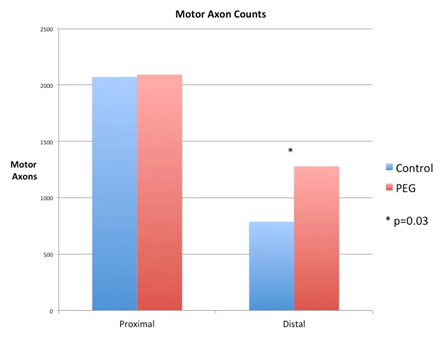Back to 2017 Annual Meeting Program
A Novel Conduit-Based Nerve Repair Improves Early Outcomes
Ravinder Bamba, MD; D. Colton Riley, BS; Marlieke Nussenbaum, MD; Alonda Pollins, MLI; Nancy Cardwell, BS; Nathaniel Kelm, BS; R. Bruce Shack, MD; Wesley Thayer, MD, PhD;
Vanderbilt University Medical Center, Nashville, TN
Introduction: Conduit-based nerve repairs are commonly used for small nerve gaps, whereas primary repair may be performed if there is no tension on nerve endings. However, primary nerve repairs require sutures at the neurorrhaphy site, which can be traumatic to the repair. We hypothesize a conduit-based nerve coaptation device will improve nerve repair outcomes by avoiding sutures at the nerve repair site and utilizing the advantages of a conduit-based repair.
Methods: The left sciatic nerves of female Sprague-Dawley rats (n=18) were transected and repaired using a novel conduit-based device. The novel conduit-based device is a pulley system that coapts nerve endings without requiring sutures at the coaptation site. The conduit-based device group was compared to a control group of rats that underwent a standard end-to-end microsurgical repair of the sciatic nerve. Animals underwent behavioral assessments at weekly intervals post-operatively using the Sciatic Functional Index (SFI) test. Animals were sacrificed at 4 weeks to obtain motor axon counts from immunohistochemistry. A sub-group of animals were sacrificed immediately post repair to obtain MRI images (4.7 T) of the nerve to demonstrate nerve coaptation.
Results: SFI scores were superior in rats which received conduit based repairs at 7 days, 14 days, 21 days, and 28 day postoperatively compared to the control group (Figure 1). As expected, motor axon counts were similar between the control and device groups proximal to the injury site. Motor axon counts distal to the injury in the device group at 4 weeks were statistically superior to the control group (Figure 2). Figure 3 shows MRI tractography of two nerves after repair using the novel conduit device. The repaired tracts appear continuous, and this finding indicates good alignment with our device.
Conclusion: A conduit-based nerve coaptation device avoids sutures at the nerve repair site and leads to improved outcomes in a rat model. Conduit-based nerve repair devices have the potential to standardize nerve repairs while improving outcomes.
Figure 1
Figure 2
Figure 3
Back to 2017 Annual Meeting Program
